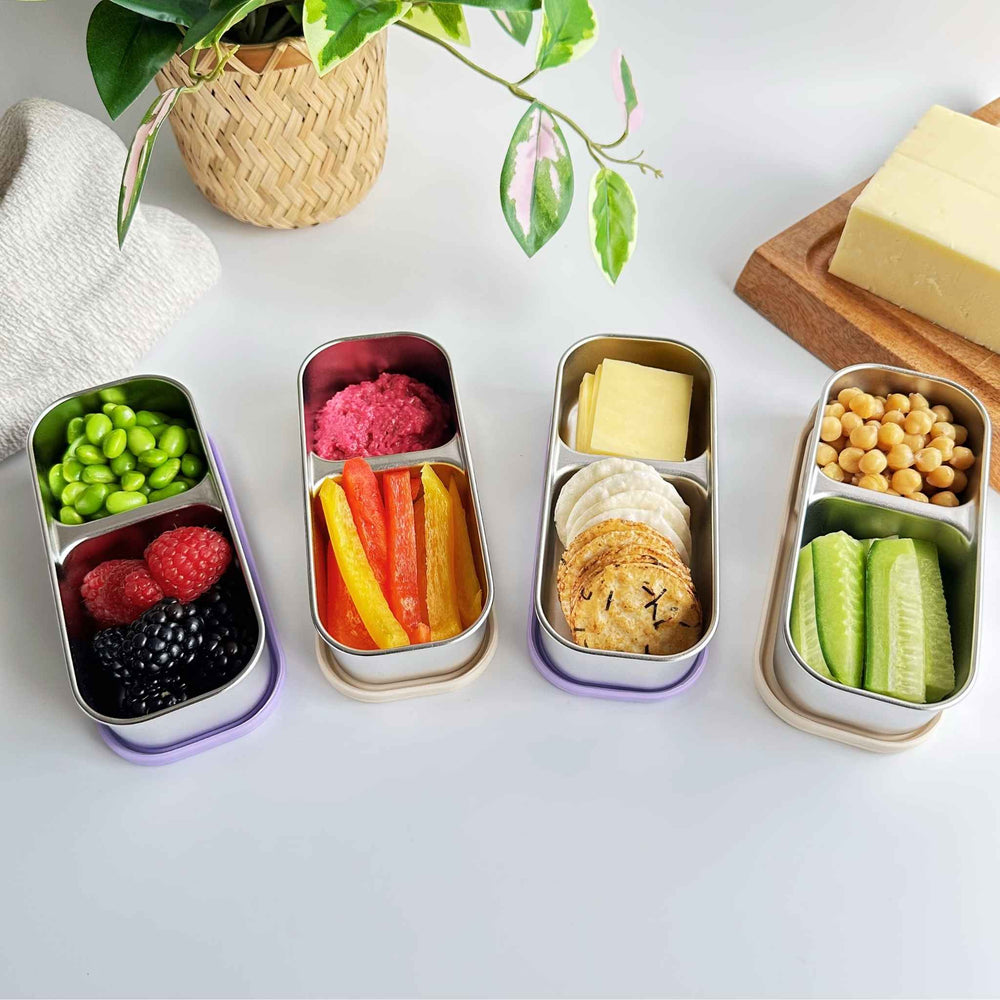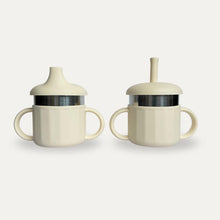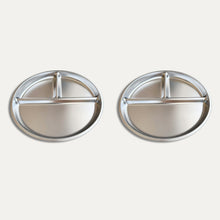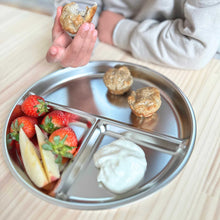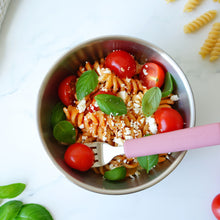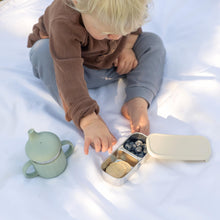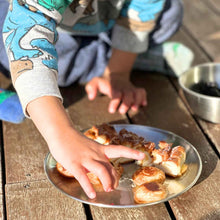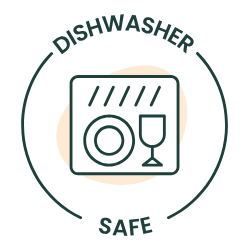Mindful Mealtimes with Your Toddler: A Guide to Calm, Connection, and Happy Eaters
Welcome to the beautiful, messy world of feeding a toddler. If you've ever wished for a way to transform mealtimes from a potential battleground into a place of calm connection and joyful discovery, you're in the right place. Learn how a gentle, mindful approach can help you and your little one build a happy relationship with food for life.

Welcome to the beautiful, often messy, world of feeding a toddler. One day, they are adventurous eaters, and the next, a firm "no" or a jar of "Vegemite" is the only thing on the menu. If you've ever wished for a way to transform mealtimes from a potential battleground into a place of calm connection and joyful discovery, you are in the right place.
Mindful eating isn't just for adults seeking to de-stress. It’s a powerful, gentle approach you can bring to your family table to help your little one build a happy and healthy relationship with food that will last a lifetime. Here’s how you can start creating those positive mealtime moments today.
1. Create a Calm, Connection-Focused Space
Our toddlers have a radar for our stress. If we bring a distracted, hurried energy to the table, they feel it. The first step in creating a mindful mealtime has less to do with the food and more to do with the environment.
Try this: For ten to fifteen minutes, make the table a "no-screen sanctuary." Put your phone away and out of sight. Turn off the TV. When you are fully present, you offer your child a sense of security and importance. This calm focus from you makes it easier for them to focus on the important work of exploring their food. You’re not just removing a distraction; you’re telling them, "This time with you is what matters most."
2. Be Their Sensory Exploration Guide
Toddlers learn about the world by touching, smelling, and yes, sometimes throwing their food. Instead of seeing this as just making a mess, we can reframe it as a critical part of their learning process. Your role is to be their gentle, curious guide.
Try this: Talk about the food in a sensory way.
- Touch: "Feel the avocado; it's so soft and smooshy."
- Sight: "Can you guess what colour these strawberries are?"
- Smell: "Mmm, can you smell the cinnamon on your oatmeal?"
- Sound: "Can you hear the 'crunch' when you bite the cracker?" By exploring food with all five senses, you make mealtime a fun, low-pressure activity focused on discovery, not just consumption.
By exploring food with all five senses, you make mealtime a fun, low-pressure activity focused on discovery, not just consumption.
This playful exploration doesn't have to stop at the table. Reading colourful books about food is another wonderful way to build positive connections. Stories that feature fruits and vegetables or characters trying new things make different foods feel familiar and exciting in a comfortable, no-pressure setting.
3. Model a Relaxed and Patient Pace
It’s easy to say "don't rush them," but our body language often tells a different story. If we're anxiously watching every bite, our toddlers will pick up on that pressure. The most powerful tool you have is your own example.
Try this: Your toddler is watching you. When you sit with them, take your own bites slowly. Put your fork down between bites, smile, and enjoy your own food. When you model a relaxed pace, you communicate that mealtime is a pleasant experience, not a task to be rushed through. This patience gives them the time they need to try new things at their own speed.
4. Use the Power of Positive Language
This is perhaps the most transformative practice of all. The words we use around food shape our children's thoughts and feelings about it for years to come. The goal is to create a neutral, pressure-free food environment.
Try this:
- Drop the Labels: Avoid calling foods "good," "bad," or "healthy." This can create guilt and shame later on. Instead, talk about what foods do for our bodies. "Carrots help us see in the dark like owls", or "Pasta gives us energy to jump up & down or kick the ball."
- Don't Use Food as a Reward: Using dessert as a reward for eating vegetables instantly labels the dessert as the "best" food and the vegetables as the "chore." This can increase picky eating. Try serving a small, toddler-sized portion of a sweet treat with the meal to neutralise its power or their favourite food when introducing new ones.
- Remove the Pressure: Phrases like "just one more bite, mate" can feel overwhelming for a toddler. Instead, use gentle, empowering language that respects their autonomy. Try saying, "You don't have to eat it, but it's on your plate if you want to try it." This simple shift gives them control and dramatically reduces mealtime anxiety.
- Reinforce Positive Interactions: When your toddler does touch, smell, or taste a new food, offer gentle, specific praise for their bravery and curiosity. Instead of a generic "Good job!", try saying, "It was brave of you to try that! What did it feel like in your mouth?" This reinforces the act of exploring, not the quantity of food eaten.
Nurturing a Happy Eater for Life
By creating a calm space, exploring food together, modelling patience, and using positive language, you are doing so much more than just getting your toddler to eat their lunch. You are building a foundation of trust and providing them with the tools for a lifetime of happy, healthy eating. Be patient with the process, and most importantly, be patient with yourself. You're doing an amazing job.
Disclaimer: We love sharing ideas to help make mealtimes happier and healthier! Please remember that all content on this blog is for informational and educational purposes only. While we strive to provide accurate and helpful information, it is not a substitute for professional medical, nutritional, or feeding advice. Every child is unique, so we always encourage you to consult with your family's pediatrician, a registered dietitian, or another qualified health professional regarding your child's specific health and dietary needs. Never disregard professional advice because of something you have read on this website.
For Further Reading: Trusted Resources for Parents
As a parent, you receive a world of information from your maternal child health nurse, GP, or pediatrician. To help keep some of the best advice in one handy place, here is a curated list of trusted resources you can turn to for evidence-based information on feeding your toddler.
Australian Resources
-
Raising Children Network: This is Australia's most comprehensive and trusted parenting website, backed by the Australian Government. Their content is evidence-based and reviewed by experts.
- Link: Toddler Nutrition & Fitness
- Why it's great: It covers everything from daily food guides and picky eating to creating positive mealtimes, all tailored for Australian parents.
-
Better Health Channel (Victorian Government): A high-quality, reliable source of health information. Since we are based in Victoria, I thought I'd share a local resource.
- Link: Eating tips for young toddlers
- Why it's great: This article provides practical, actionable tips that directly align with the themes in our blog post, such as letting the child decide how much to eat and creating positive mealtime routines.
-
The Royal Children's Hospital Melbourne: A world-class hospital providing excellent, easy-to-understand fact sheets for parents.
- Link: Nutrition – babies and toddlers
- Why it's great: It clearly explains the key nutrients toddlers need and addresses common parental concerns, offering reassurance and practical advice.
-
Eat for Health (Australian Government): This site provides the official Australian Dietary Guidelines.
- Link: Australian Dietary Guidelines for Children
- Why it's great: For parents who want to understand the science, this brochure breaks down the five food groups and recommended serves for young children.
International Resources:
- World Health Organisation (WHO): Complementary Feeding
- UNICEF: Feeding your baby: 1–2 years
Expert-Led Platforms:
-
Solid Starts: Whether you are trying to figure out how to introduce boiled egg or the tiny broccoli tree (as my son calls it), this is a comprehensive, expert-led platform dedicated to helping children start solids and overcome picky eating. I have personally found them very useful, plus they have a great app.
- Link: SolidStarts.com
- Why it's great: Founded by feeding experts and medical professionals, it features a free, exhaustive food database showing how to safely prepare almost any food for babies and toddlers. It also offers extensive guides and programs on reversing picky eating using evidence-based, responsive feeding techniques.
Happy mealtimes,
- Vee & The Greenvyne Crew 🌿
Image credit: © Vanessa L | Pexels
